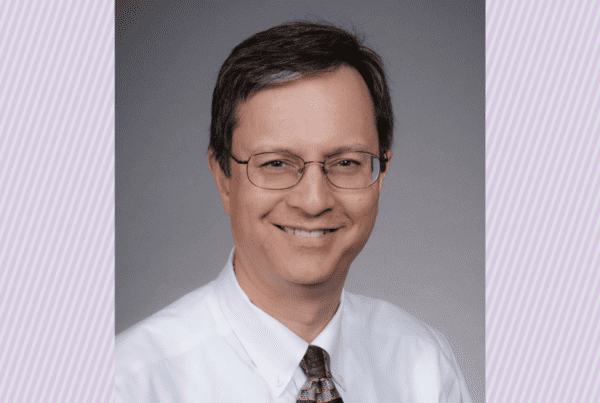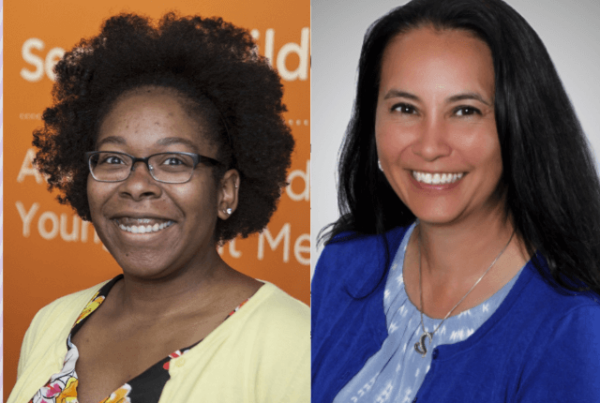Michael Yaitanes started as UW Medicine’s new Contact Center director on July 12, 2021. He has 15 years of experience working in the contact center and academic healthcare space and has guided the launch of two contact centers. Most recently, he worked at University of California, Davis where he helped build their COVID-19 response.
Get to Know Him:
What brought you to UW Medicine?
Our close friends, who are pretty much family, let us know they were moving back to Seattle right as we started to look to move from Sacramento. Around the same time, I heard about the position at UW Medicine. Something pointed us in this direction, and once we visited Seattle we fell in love with the city, hiking, water and outdoor accessibility.
I’m really happy to be here. UW Medicine is an innovator in the healthcare contact center space and in patient access and has in place what I was working to build in my two prior roles where we started new contact centers. The team within Enterprise Access & Innovation and across our outpatient practices include some of the most dedicated, engaged, supportive and forward-thinking people I’ve had the opportunity to work with. This was apparent during the interview process and has been proven since I started. I’m excited to have an impact and help make it even better.
How did you get started in healthcare?
My first professional job was working in Medicaid eligibility, first as an eligibility specialist, and then as a supervisor, so I was on the periphery of healthcare. My wife is a nurse and we moved from Florida to Southern California for her work. I started applying for jobs when we got to California and tried for a contact center manager position — I didn’t have any experience — and ended up getting the job. I just dug in, learned and helped get the contact center turned around. I think my outsider perspective helped bring new ideas, and I eventually was promoted to a director role.
How does the Contact Center work?
The Contact Center handles general scheduling, patient registration and referral management.
It’s the virtual front door for our clinics. When a patient calls, they are talking to Contact Center staff rather than clinic staff. We want it to be a seamless process from when they call to when they get seen by their provider, which is why it’s important to keep partnerships with the clinics strong, up to date and be seen as an extension of the clinic.
What are some of the biggest challenges facing the Contact Center?
There is unpredictability in referral volumes and call volumes, especially over the last year with COVID-19. This can lead to longer wait times for callers, which we want to avoid. Like many at UW Medicine, the team has been through a challenging year and a half, so getting back to a normal, steady state is important. We’ll be staying predominantly remote, so ensuring that the team is connected to each other and is being supported is important.
How do you plan on approaching your role as Contact Center Director and what are your goals?
Initially coming into this role I focused on performing an overall assessment of the Contact Center, meeting with as many of our team members, clients, partners and other stakeholders as possible. It’s important to hear everyone’s perspective on what we are doing well and where the opportunities for improvement are.
Being new to the health system and the area, I’m working to quickly learn as much as I can about UW Medicine and the patients we serve. My early goals include strengthening relationships and partnerships with the clinics we support, stabilizing our operations and service levels and solidifying our team culture since almost all of the Contact Center is working remotely. We’ve recently finalized some key agreements which will help us get back to expected service levels in the next few months.
How big of a role does the Contact Center play in the patient experience?
In my opinion, an important one, as so many of our patients start their experience with one of our team members. As one of the first lines of contact, we influence how the patient feels about the institution. If they call us and get bad service, they might go elsewhere. We want all their needs to be met on one call whenever possible.
How do you measure success?
The best compliment we can receive is when a patient goes to a clinic and asks to talk to the person they spoke with on the phone, feeling like they spoke directly with someone in the office. Success starts with having a focus on quality, creating a good patient experience, and a supportive team culture.
The key performance indicators (KPIs) we generally report out are average speed of answer, service level (percentage of calls answered in 60 seconds or less), and abandonment rate (how many people disconnected before they reached a team member).
What role has the Contact Center played in the COVID-19 response?
The team has helped throughout the pandemic by supporting our clinics as they pivoted to video visits and then back to seeing more patients in person, scheduling COVID-19 tests and any other assistance needed. Much of the effort in 2021 has been around vaccine scheduling and manning the vaccine scheduling line, including targeted patient outreach to help our community get vaccinated and turn the tide on COVID-19. Most recently we’ve helped with third dose, booster and pediatric (ages 5-11) vaccine scheduling.
What are the benefits of using the Employee Priority Access line?
The employee phone number (206.520.5050) gives employees the access to care that they deserve. It’s a concierge level line, so you call one number and get taken care of. It’s a great service for employees to use and means shorter call wait times for employees and their families.
What do you like to do outside of work?

Yaitanes and his wife hiking at Lake Tahoe.
Our youngest daughter is a junior in college, so it’s just my wife and I and our two pets (a Cattle Dog-Border Collie mix and a cat). We usually spend our weekends out with the dog, hiking or exploring our new city. Seeing friends, reading and cooking take up the rest of any leisure time I have.


